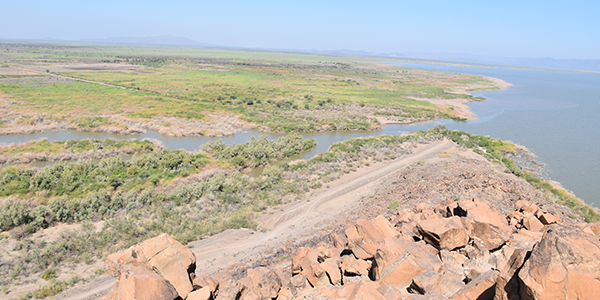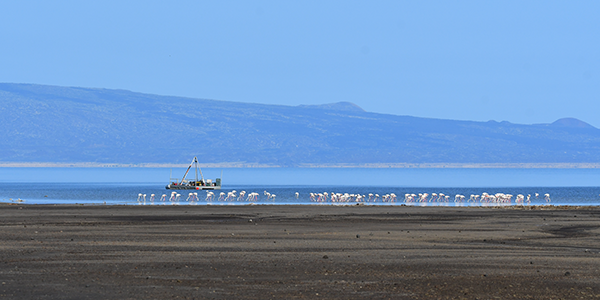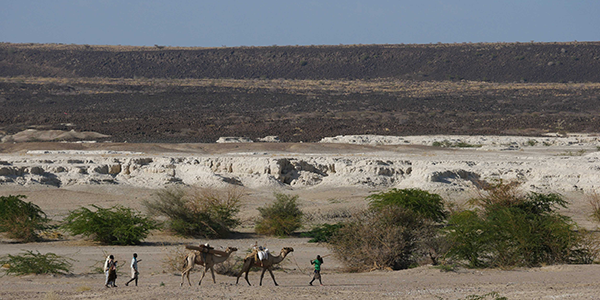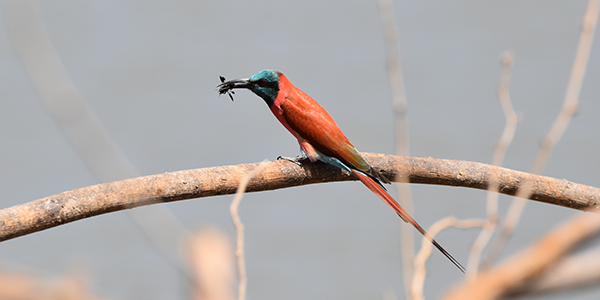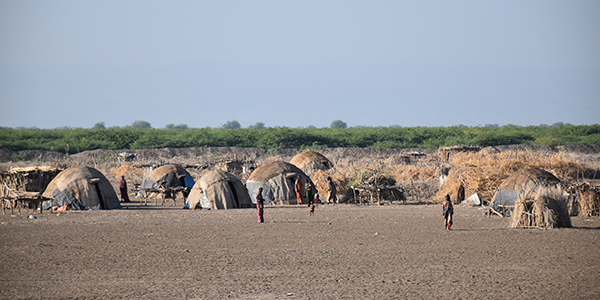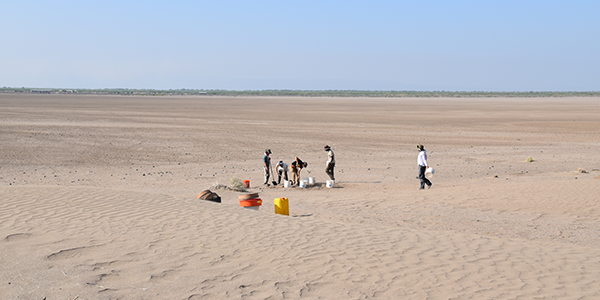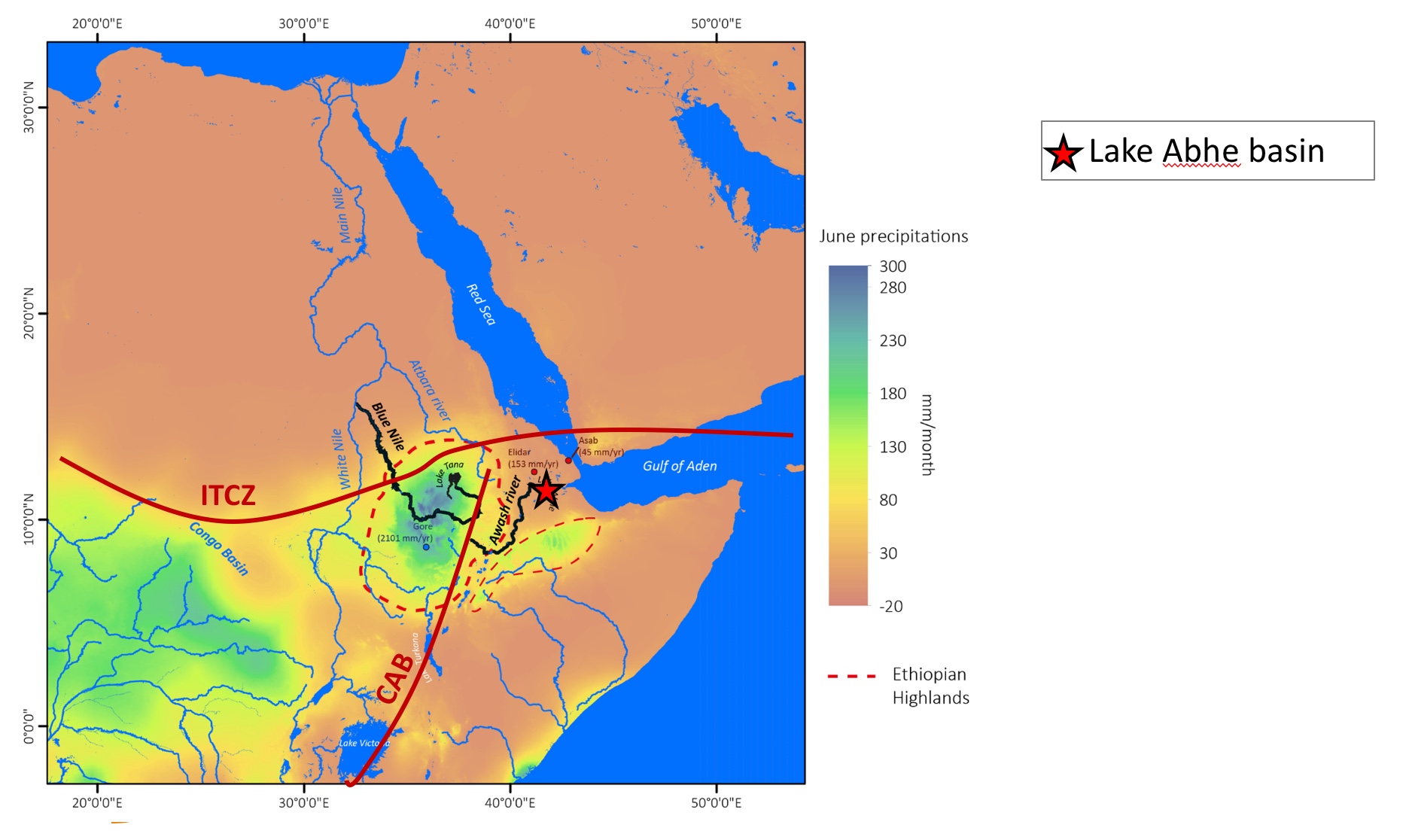The NILe and AFAR regions: hydrologic changes and impact on human adaptation in the last 20,000 years (NILAFAR)
Les modèles numériques qui synthétisent nos connaissances du système climatique prévoient pour les décennies à venir des variations extrêmes du cycle de l'eau qui auront un impact sur les ressources naturelles et les populations. Dans la corne de l’Afrique, depuis plusieurs milliers d’années, des périodes de fortes et faibles moussons ont déterminé la disponibilité en eau dans les basses terres, ce qui a affecté drastiquement les dynamiques de peuplement humain. Comment ces populations se sont-elles adaptées à ces changements plus ou moins rapides de disponibilité en eau depuis 20,000 ans ? Comment l’homme s’adaptera aux changements climatiques et environnementaux futurs ?
Model simulations of future climate change predict a reduction of precipitation in subtropical desert zones at the end of the 21st century over the coming decades, which will have an impact on natural resources and populations. In the Horn of Africa, for several thousand years, periods of strong and weak monsoons have determined the availability of water in the lowlands, which has drastically affected the dynamics of human settlement. How have these populations adapted to these more or less rapid changes in water availability over the last 20,000 years? How will humans adapt to future climatic and environmental changes?
- Détails
Illustration of Nilafar project philosophy
based on interaction between multiple disciplinaries & objectives
- Détails
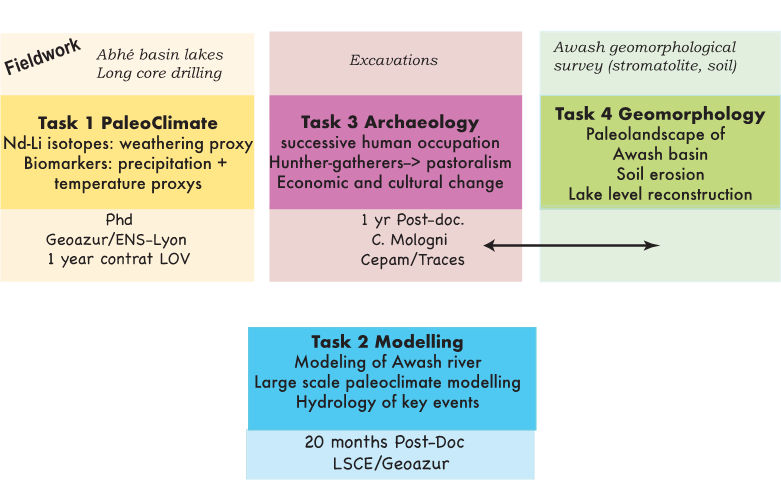
The NILAFAR project was built on previous work of three complementary archaeological programs in the Afar and the Central Rift Valley (VAPOR-Afar, PSPCA and LSA Sequence). L. Khalidi currently directs the VAPOR-Afar program in the Ethiopian Afar. J. Cauliez currently directs the PSPCA program in the Djibouti Afar. C. Ménard directs the LSA Sequence program.
- Détails


